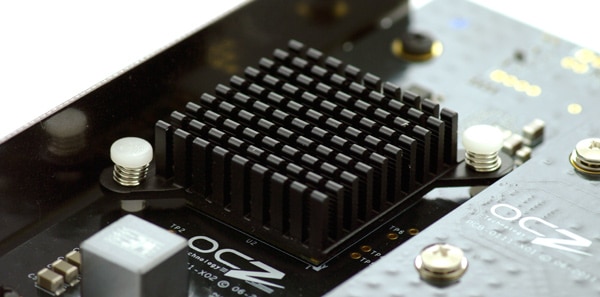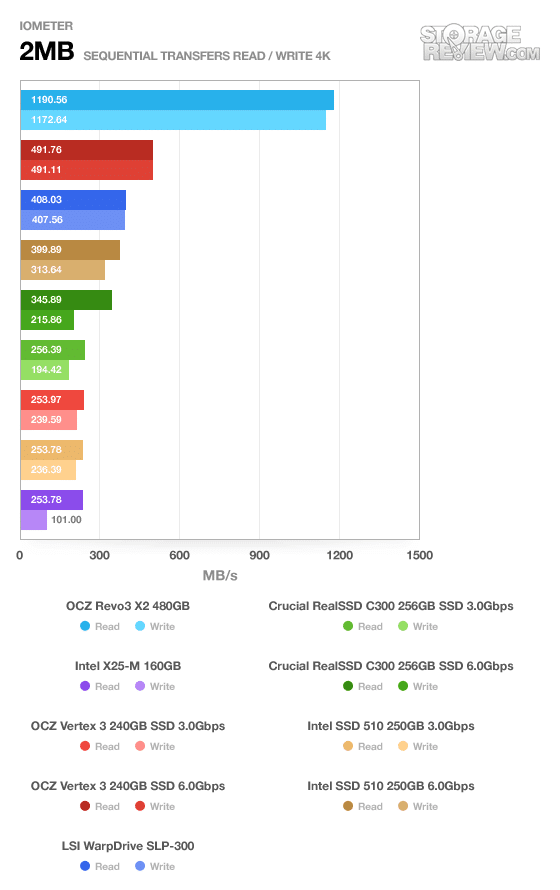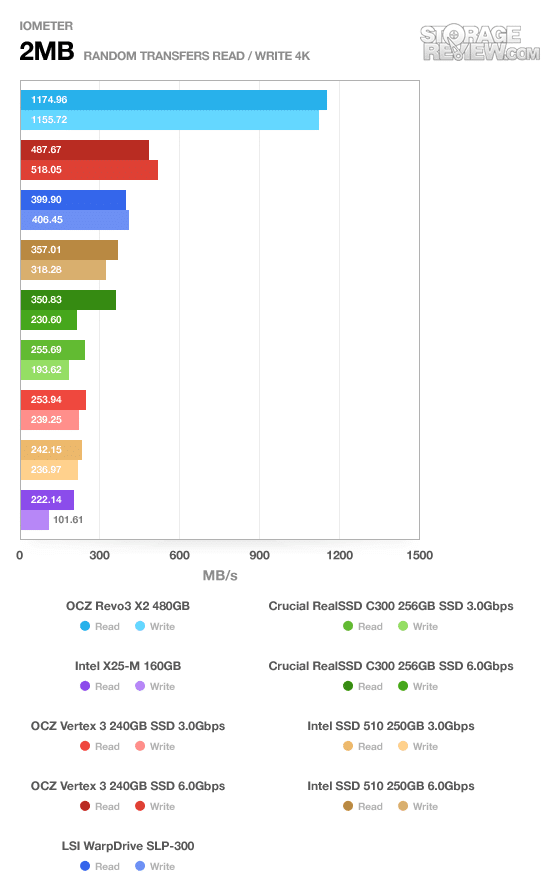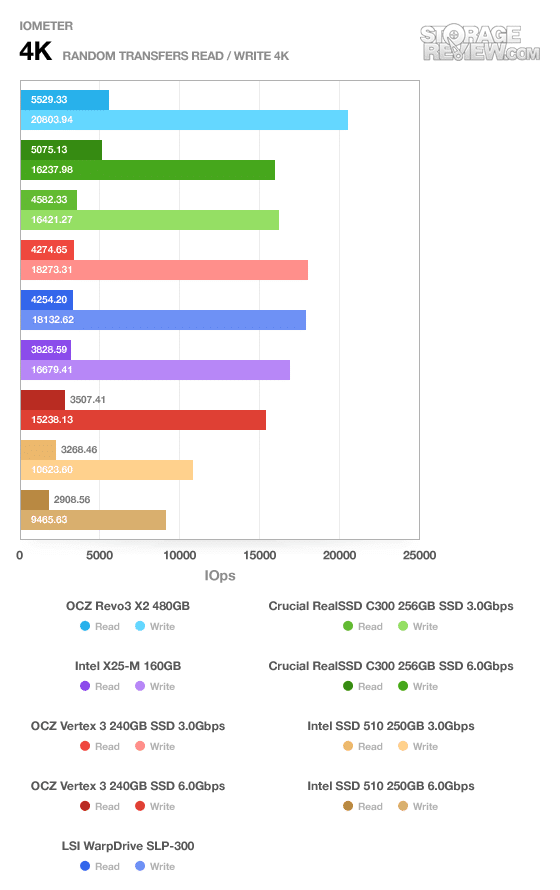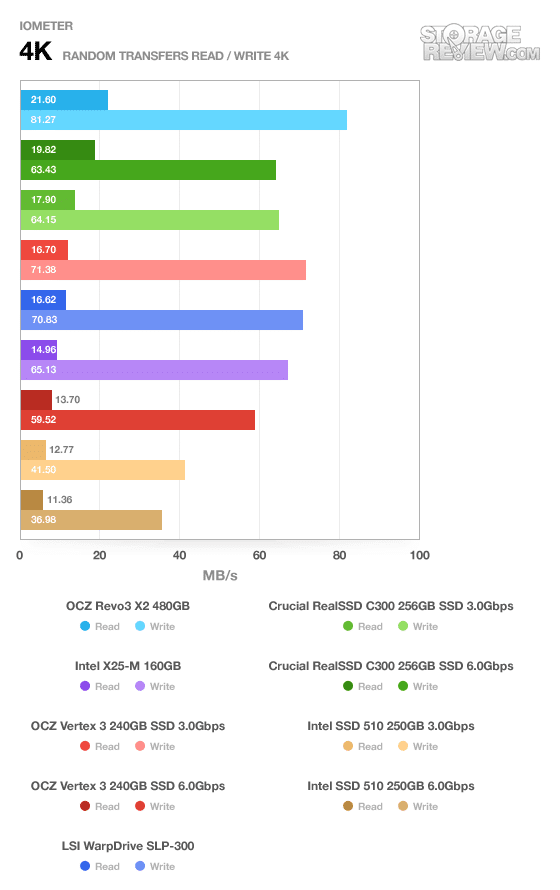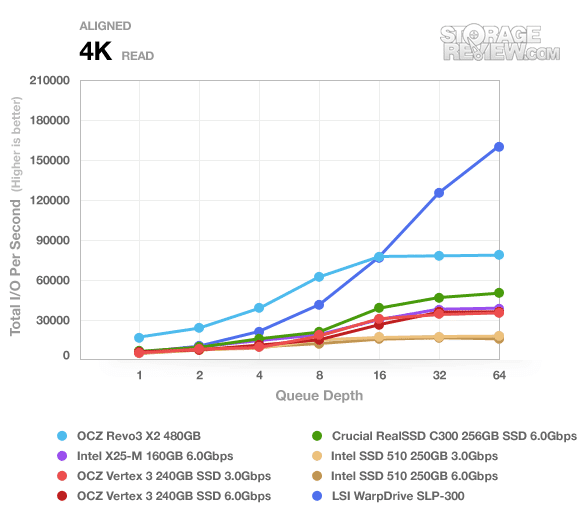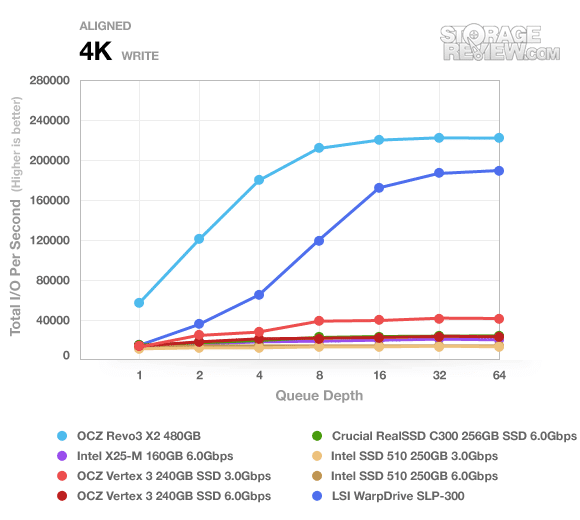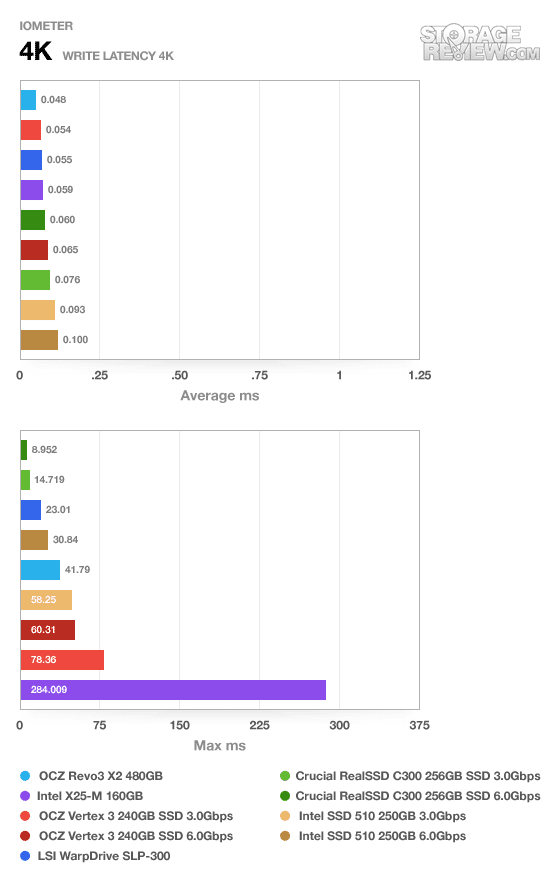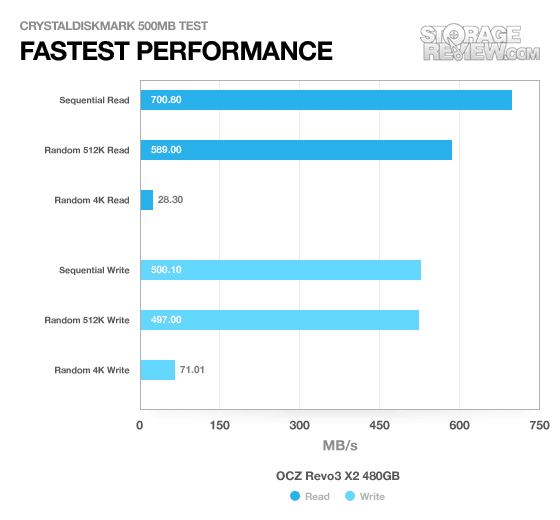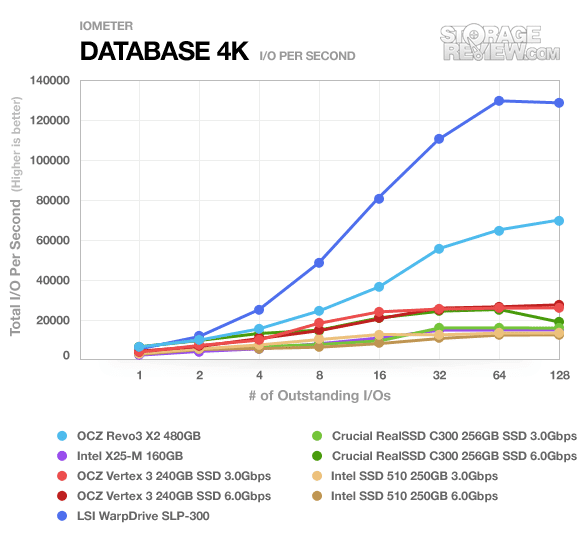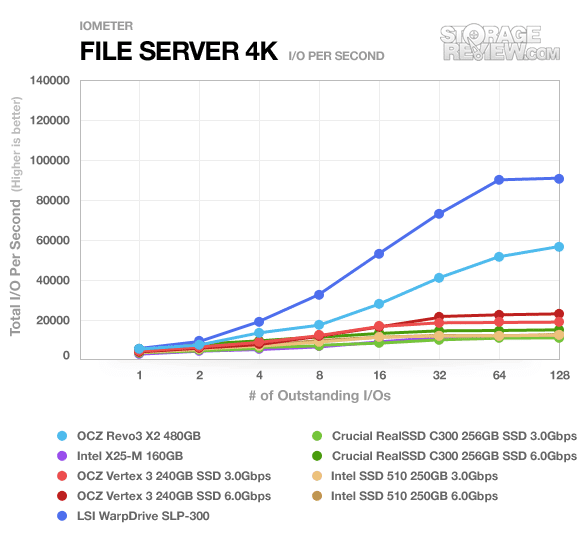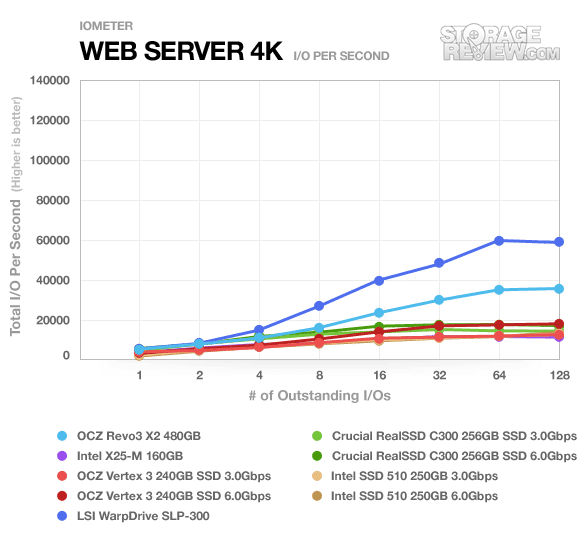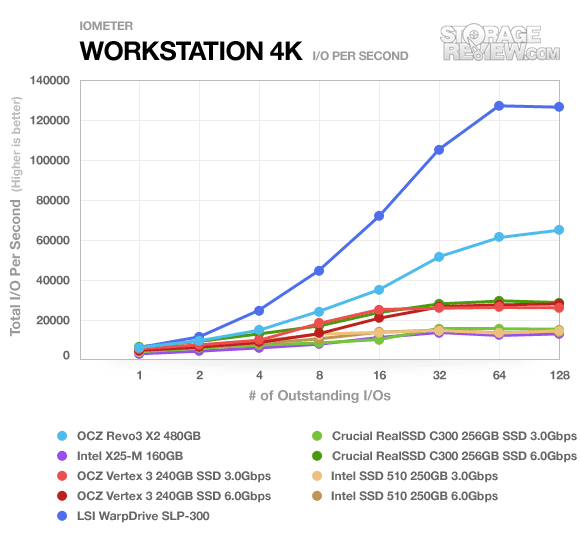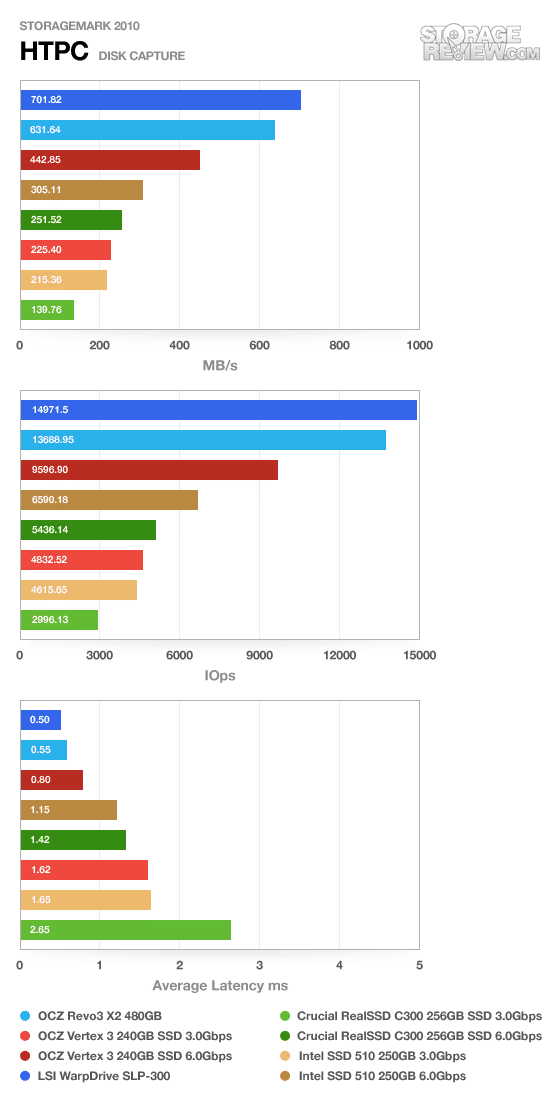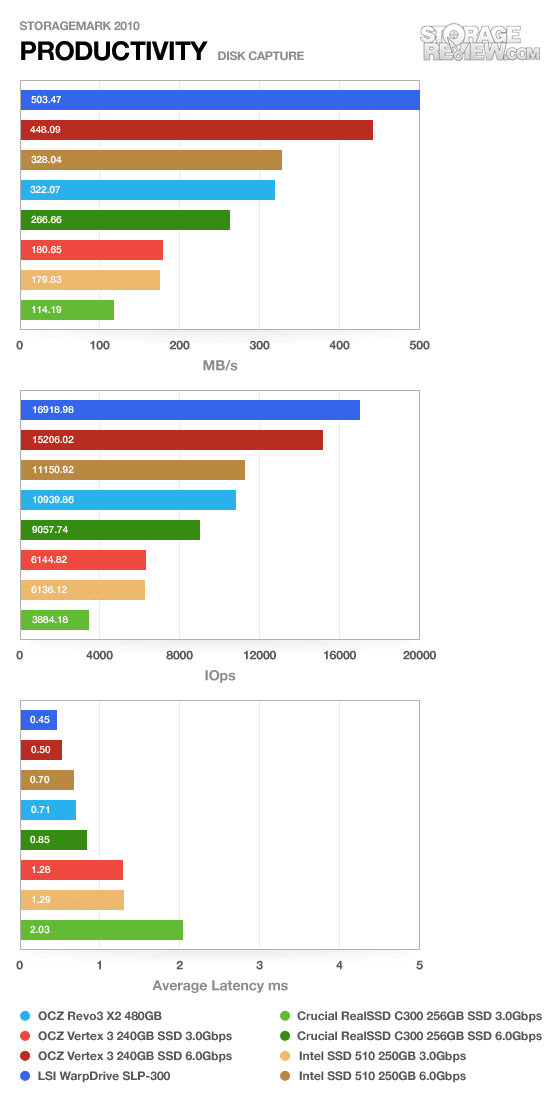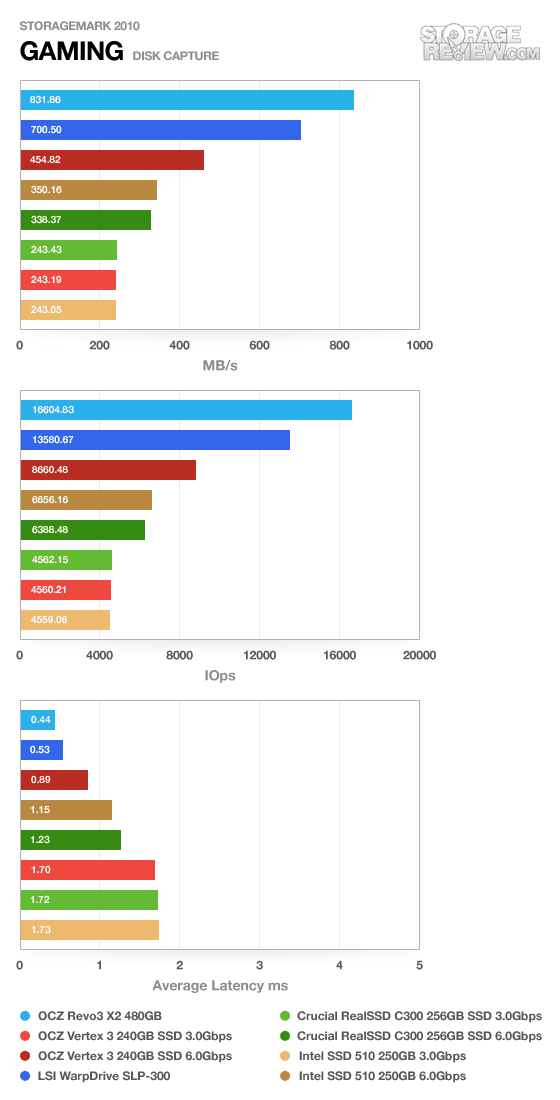
Over the summer we reviewed a pre-production version of the 480GB OCZ RevoDrive 3 X2 SSD. Even though the hardware and firmware were not final builds, the RevoDrive 3 X2 was still incredibly impressive, given the speedy PCIe interface and four SandForce SF-2281 processors. We’ve finally been able to log enough time with the production version of the RevoDrive 3 X2 and our excitement over the platform has done nothing but grow. In fact, the performance of the card rose so significantly that we had to adjust the scale of our benchmark charts to compensate.
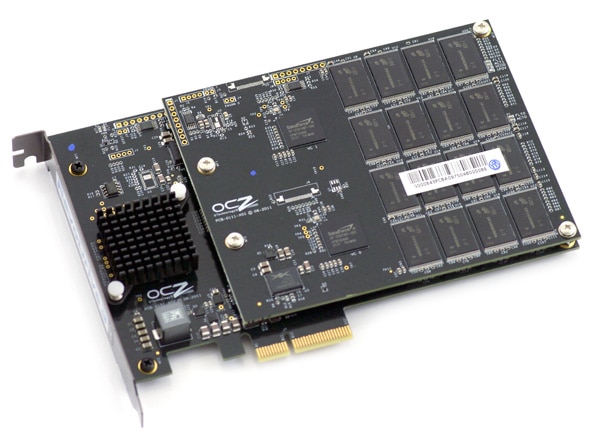
The hardware didn’t significantly change between the pre-production and retail versions, although OCZ did add a heat sink to the VCA 2.0 controller this time around. Additional cooling probably helps improve long term endurance and performance.
Since much of the overview and build information from the old review applies this time around, we’re not going to re-hash all of those points. The purpose of this updated review is to give perspective on the performance of the RevoDrive 3 X2 in final build form. Let’s get down to it then and reveal how the drive performed through our gauntlet of benchmarks.
Synthetic Benchmarks
In our first review, the pre-production RevoDrive 3 X2 was just shy of breaking the 1,000MB/s read and write barrier, although that was not a problem this time around. In our IOMeter 2MB sequential file transfer test we measured speeds reaching 1,190MB/s read and 1,172MB/s write with repeating data.
The RevoDrive 3 X2 didn’t slow down in our next test which changed from sequential to random transfers, but still retaining the 2MB transfer size. This time around it measured 1,174MB/s read and 1,155MB/s write.
At a queue depth of one, the RevoDrive 3 X2 scored just above single-drive SSDs, although still with a nice lead with 4K random write speed. The real action though is watching how these numbers change as we move into the higher queue depths.
Measuring the random 4K read and write in higher queue depths, simulating multi-threaded loads, the RevoDrive 3 X3 absolutely dominated everything but the enterprise-grade LSI WarpDrive in read speeds.
In 4K write, the RevoDrive 3 X2 blew away the WarpDrive, surpassing 225,000 IOPS or 879MB/s in pure random activity.
The OCZ RevoDrive 3 X2 also had no trouble leading our latency chart with its higher 4K write speeds at lower queue depths. It measured 0.048ms average with a peak of 42ms.
Looking at incompressible data transfers using CrystalDiskMark, we found read speeds top out at 700MB/s and write speeds slow down to 500MB/s. This is worst case for the SandForce processor.
It wasn’t a huge surprise to see the LSI WarpDrive top the charts in the server tests, which it was primarily designed to compete in. The RevoDrive 3 X2 had no trouble staying above the single drives though.
Real-World Benchmarks
Compared to our first go around with the pre-production RevoDrive 3 X2, we saw significant gains in synthetic benchmarks, but scores either holding or dropping in our real-world traces. Since changes were primarily firmware, its probably safe to say the drive was optimized for areas outside of what some of our traces cover.
While still showing a lead compared to the single-controller SSDs, the RevoDrive 3 X2 did slip down from our first pre-production sample in the HTPC trace.
Our productivity trace actually saw the largest drop, with the RevoDrive 3 X2 scoring under Vertex 3 and Intel SSD 510 in SATA 6.0 mode.
The speed in our Gaming trace stayed relatively the same, measuring 831MB/s average.
Conclusion
After seeing the performance skyrocket in our synthetic benchmarks, it goes without saying that significant firmware improvements were had between the pre-production sample and the retail version of the RevoDrive 3 X2. Random 4K write speeds saw probably the biggest gains, jumping from right around 100k IOPS to 225k IOPS. Other areas like peak read and write speeds also improved, pushing to almost 1,200MB/s in our sequential file transfer test. Not all areas saw improvements though, as we found some scores to drop in our HTPC and Productivity real-world traces, both of which have a heavy mix of read and write activity. The gaming trace was mostly untouched, with heavy read activity.
It was interesting to see just how big of an impact firmware revisions can have on a product through its development cycle. We saw huge gains in some areas, drops in others, but overall a good improvement. Hardware changes also came along in the form of a heatsink on the primary PCI-e controller, which should help long term reliability in demanding environments.
After many weeks with the RevoDrive 3 X2 our admiration for the PCIe platform, and the OCZ SSD specifically, did nothing but grow. In the end our bottom line remains unchanged, but we’ve updated the review with an Editor’s Choice award for the blazing performance and drive reliability.
Bottom Line
If you need the highest levels of performance, but don’t want to deal with the setup or bulk of a four-drive RAID, the OCZ RevoDrive 3 X2 offers performance that rivals even much more expensive enterprise-class solutions.

